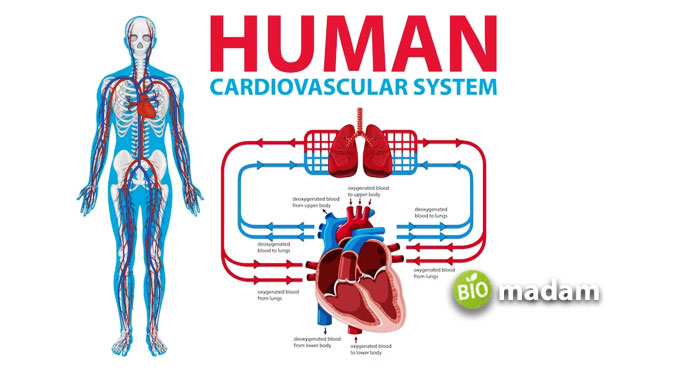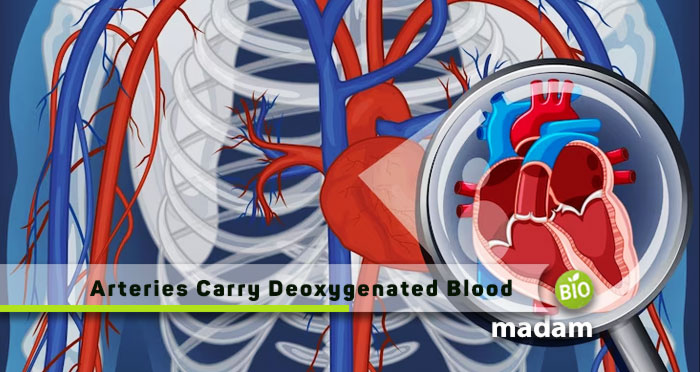Arteries are one of the three types of blood vessels in the body, among arteries, veins, and capillaries. They typically supply oxygenated blood from the heart to all bodily organs. But, “can an artery carry deoxygenated blood.”
Yes, arteries do carry deoxygenated blood, but in a special case that we will discuss below. This article tells you everything about arteries and which artery carries deoxygenated blood.
What are Arteries?
Arteries are the strongest blood vessels among the three main types as they facilitate blood movement away from the heart. The blood gushes out of the heart with a high pressure that requires arteries to have thick walls. They carry oxygenated blood from the heart and distribute it throughout the body. The oxygenated blood is critical for tissue and organ function, and the oxygen also contributes to cellular processes.
Can an Artery Carry Deoxygenated Blood?
Yes, arteries carrying deoxygenated blood are called pulmonary arteries. The pulmonary arteries carry blood away from the heart to both lungs. They take deoxygenated blood to the lungs to make it oxygen-rich. The pulmonary trunk exits from your right ventricle at your pulmonary valve and splits into right and left pulmonary arteries, which supply the deoxygenated blood to each of the lungs.
Location and Structure of Pulmonary Artery
The main pulmonary artery comes from the right ventricle at the pulmonary valve and travels to the left side of the ascending aorta. The pulmonary trunk splits into the right and left pulmonary arteries beneath the aortic arch that travel to the right and left lungs.
Pulmonary arteries comprise the same three layers as other arteries: tunica intima, tunica media, and tunica adventitia. Tunica intima is the smooth innermost layer, while tunica adventitia is the protective outer layer. The main pulmonary artery is typically 5 centimeters long and 2.5 cm (females) and 2.7 cm (males) long.

Function of Pulmonary Artery
The primary function of the pulmonary artery is to bring deoxygenated blood from the heart to the lungs to gain oxygen and remove waste products such as carbon dioxide. The lungs convert the deoxygenated blood into oxygenated blood and send it back to the heart, which pumps it to all bodily organs.
Can Veins Carry Oxygenated Blood?
Just as arteries, veins also function to circulate blood inside the body, but how does it work? If you are curious to know if veins carry oxygenated or deoxygenated blood, here is the answer:
Veins typically carry deoxygenated blood from the body organs to the heart, except the pulmonary vein. The word “pulmonary” relates to “lungs,” so pulmonary veins are the ones carrying oxygenated blood from the lungs to the heart. The next step is the heart which distributes it to body organs.
The Bottom Line
Arteries are the strongest of the three blood vessels in the body as they take oxygenated blood from the heart to all body parts. However, if you wonder, “Can an artery carry deoxygenated blood,” it can. Pulmonary vessels in the body show exceptions when supplying blood. Pulmonary arteries carry deoxygenated blood from the heart to the lungs, and the pulmonary vein takes the oxygenated blood from the lungs to the heart.
FAQs
Why does the pulmonary artery carry deoxygenated blood?
The pulmonary artery carries deoxygenated blood from the right ventricle to the lung’s alveolar capillaries, where the exchange of nutrients and gasses occurs. The blood takes up oxygen from the lungs, and the pulmonary vein takes this blood back to the heart.
What carries deoxygenated blood?
Veins typically carry deoxygenated blood from the body’s organs to the heart, which sends it to the lungs for oxygenation. This blood is then redistributed to the organs.
What is the largest vein in the body?
The inferior vena cava is the largest vein in the body that carries deoxygenated blood from the feet, legs, pelvis, and other organs in the abdomen.

Jeannie has achieved her Master’s degree in science and technology and is further pursuing a Ph.D. She desires to provide you the validated knowledge about science, technology, and the environment through writing articles.

